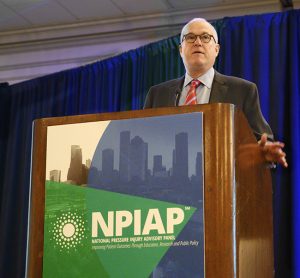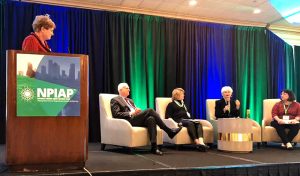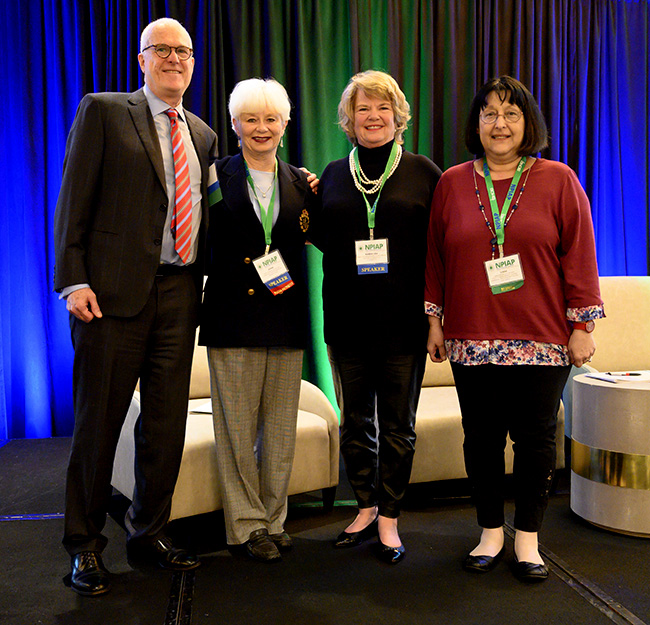
I recently presented on the topic of skin failure at the National Pressure Injury Advisory Panel (NPIAP) annual meeting in Houston on February 27th and 28th, sharing the podium with Janet Cuddigan PhD, RN, FAAN, President of NPIAP. The goal of our session was to perform concept analysis to identify attributes, antecedents, and consequences of both pressure injuries and skin failure.

Joyce Black PhD, RN, FAAN moderates our panel with national authorities Karen Lou Kennedy-Evans RN, FNP, Diane Langemo PhD, RN, FAAN,APRN-BC, and Diane Krasner PhD, RN, FAAN.
Later in the day I took part in a panel with national authorities Diane Langemo PhD, RN, FAAN, Karen Lou Kennedy-Evans RN, FNP, APRN-BC, and Diane Krasner PhD, RN, FAAN, and moderated by Joyce Black PhD, RN, FAAN. We discussed case presentations that underscored and illustrated concepts of skin failure, unavoidable pressure injuries, Skin Changes at Life’s End (SCALE), and Kennedy Terminal Ulceration.

Jeffrey Levine MD, AGSF, CWSP with national authorities Diane Langemo PhD, RN, FAAN,APRN-BC, Karen Lou Kennedy-Evans RN, FNP, and Diane Krasner PhD, RN, FAAN.
This was an honor as well as a wonderful opportunity to contribute to the ongoing discussion on these important concepts, whose meaning and nomenclature is still evolving in the wound care world. For more information on the background of our discussion please take a look at these links:
Terminal Ulcer Terminology: A Critical Reappraisal
* * * * * * * * * * * * * * *
Related posts:
Terminal Ulcer Terminology Reconsidered
Is the Pressure Injury Staging System Obsolete?
Pressure Injuries and the Human Warranty
Determining the Avoidability of Pressure Ulcers
Historical Roots of the “Avoidable-Unavoidable Pressure Ulcer Controversy”
